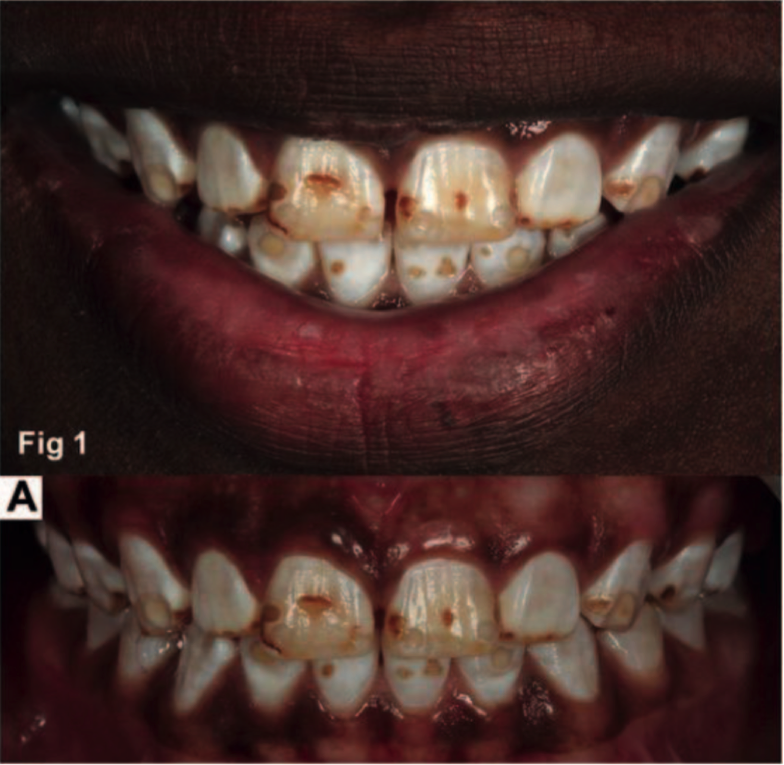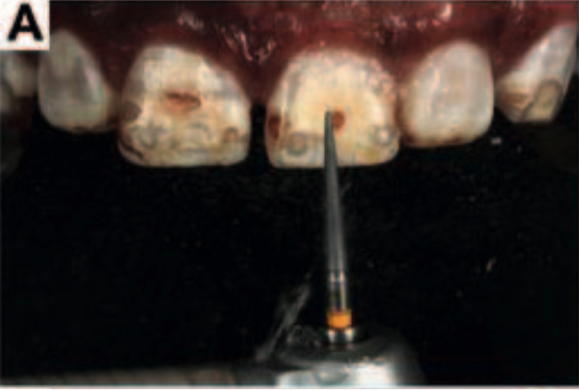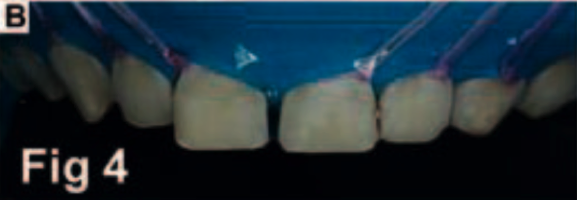Fluorosis can be seen in varying degrees of severity. Regardless of the severity, it can produce a very un-esthetic condition, especially on anterior teeth. This condition can have a profound effect on the psychosocial state of a patient; especially considering the young age that fluorosis is first noticed.
This undesirable mineralization of enamel is brought upon by excessive intake of fluoride (from a variety of sources) during amelogenesis. Fluorosis presents as discolorations ranging from white opaque areas to dark brown stains. The degree of the fluorosis dictates the treatment indicated. Typically, for the most severe cases, treatment can range from esthetic resin bonding to crown/veneer restoration.
Recently it has been shown that even severe cases of fluorosis (deep pitting and brown stains) can be treated with micro-abrasion followed by dental bleaching. Such a treatment was shown to provide incredible esthetic results, with a relatively conservative treatment.
Case Presentation
A 17-year-old boy presents to the dental office with white/ brown discoloration with a hard texture and pitted eroded areas. Medical history shows full health. The patient and his parents are looking for an esthetic treatment to restore the discoloration present.

Treatment Rendered
To begin, the superficial layer of stained facial enamel was removed using a fine tapered diamond bur, under copious water, in a high-speed hand piece.

Rubber dam was placed for gingival protection, in preparation for the micro-abrasion procedure.
Opalustre micro-abrasive product, in rubber cups, using a slow speed hand piece was applied “three times for one minute on the facial surface of the stained teeth, with five seconds on each tooth for a total of one minute, with water rinsing between each application.” Following this, a neutral 2% sodium fluoride gel was applied.
One month following the micro-abrasion procedure, 10% carbamide peroxide dental bleach was delivered with a custom acetate bleaching tray. This was applied for 2hours/day. Post-operative appointments were held once a week for 6 weeks. During these appointments, no gingival irritation or patient sensitivity was noted.

This provides an example of how micro-abrasion can be used as a simple, low cost and relatively conservative method to treat undesired fluorosis, even in severe cases. It should be noted that following micro-abrasion, the teeth could take on a yellowish appearance, due to the reduction of enamel thickness. Therefore, such as in this presented case, dental bleaching was performed to lightened the tooth, and decrease the contrast between the healthy and stained enamel present.






